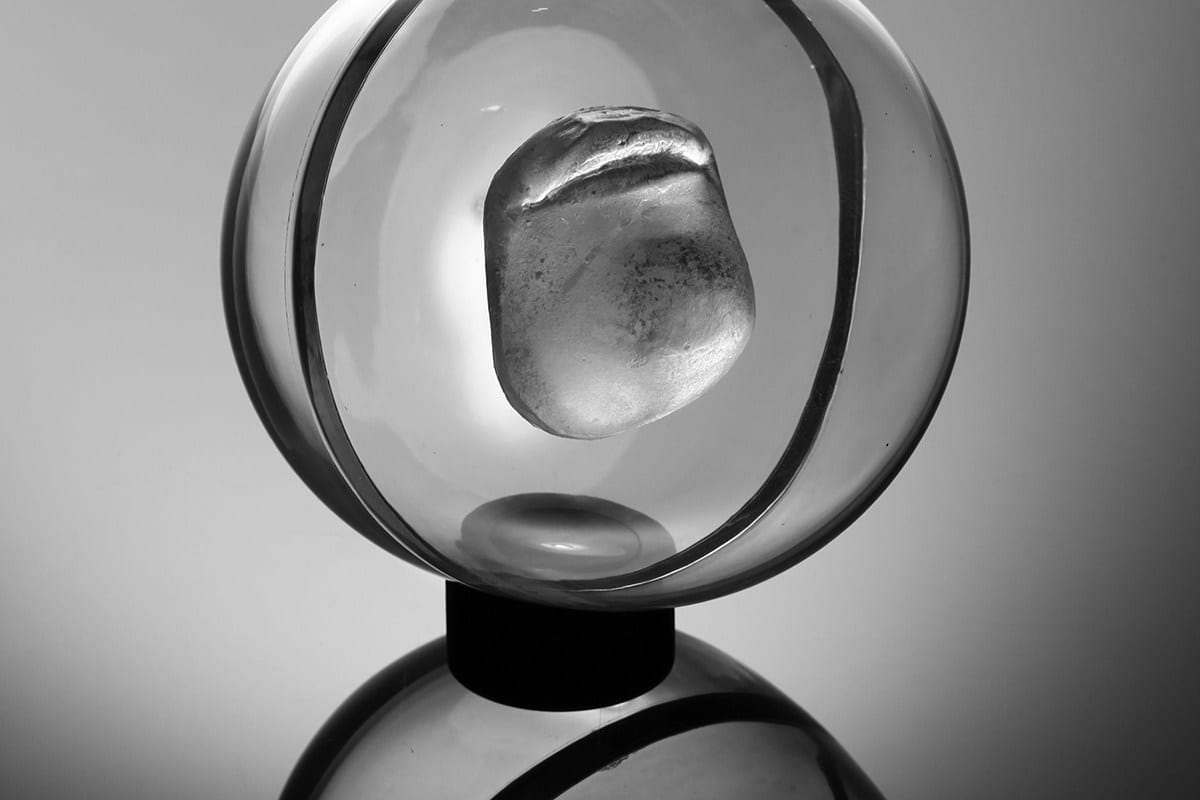BY KIT HAIST – STAFF WRITER
A Centre student who enters the Jones Visual Arts Center – or JVAC – is probably either pursuing an art degree, taking an elective, or attending the odd humanities class taught in the building. As a result, most of Centre’s population may remain unaware of the art JVAC hosts in the Aegon Gallery.
From now until October 27th, the Aegon Gallery is showcasing “Survey of Works” by Centre Alumni Ché Rhodes, ’95.
Rhodes’ artistic path began at Centre under the mentorship of Professor Stephen Powell, the head of the glass-blowing studio. “I had a moderate interest in art and probably a stronger one in fire, but [Stephen Powell] is the person who introduced me to glass,” Rhodes explained. He cites Powell as his strongest influence in glass, art, life, and even his “preferences in snack foods.”
Following in his mentor’s footsteps academically, Rhodes teaches students as well. He is currently the Head of Studio Glass at the University of Louisville, where he began teaching in 2005.
An important feature of the glass-blowing studio that shaped Rhodes was how Powell ran, and continues to run, the studio itself. “[Powell] has always included students in the management, growth, and maintenance of the facility which has given our students tremendous practical experience and has aided them in landing prime opportunities to further their careers in glass,” said Professor Judith Pointer Jia, who organized Rhodes’ gallery.
“The scale of his artwork makes it hard to ignore and the combination of materials – glossy glass and various metal textures – pulls you in,” Jia offered, when asked to describe Rhodes’ works.
She went on to explain how these and other nuances of art are often lost on students who study works only in class, and therefore “having art in the gallery for students to view in person is a highly valuable teaching tool and learning experience.”
Having worked closely with Rhodes, Stephen Powell emphasized the personal aspects of his art.
“Ché’s work is very introspective! At the risk of alienating the viewer, Ché is making a personal statement that satisfies his need for expression,” he stated. “It is up to the viewer to decide if they want to participate in his visceral connection to glass and its expressive qualities.”
Although hesitant to offer an explanation of his own work, Rhodes’ provided an artist’s statement from a few years ago. In the statement, Rhodes’ described his desire to explore the “qualitative vs. quantitative aspects of experience.” As a result of his attempts to “convert or distill complex and layered sensory or sensual experience into simple information,” Rhodes leaned towards “graphic simplicity and sybaritic minimalism.”
While the statement is still true somewhat today, Rhodes stated his most recent body of work explores “approaches that normally offend [his] sensibilities.”
Speaking about his current work in the Aegon Gallery, Rhodes explained, “with the exception of [the piece entitled] “sic,” all of these works are actually sketches or prototypes of pieces I’m still developing.” “Sic” is one of Rhodes’ favorite pieces in the gallery. His other favorites include “the untitled tank of water, and [maybe] output – because they have, had, or will have a persisting conceptual element.”
Instrumental to exhibiting Rhodes’ favorite pieces and the rest of his works is the lighting, an element many may overlook; however, not Stephen Powell, who oversaw the lighting of the gallery. “I am a fanatic about lighting!” expressed Powell. “The relationship between light and glass is what makes glass so special. You can transmit light through glass, reflect light off glass, and everything in between.”
Not only does lighting affect the glass itself, but also the visitor’s experience with the work. “If you don’t have light, you don’t see anything. Light controls the emotive value of color, something that effects our enjoyment of life, whether we are aware of it or not,” Powell voiced.
He hopes visitors to the gallery will “have a better understanding of creativity and its many approaches to expression.” Jia seems to agree with Powell, describing her own experience with Rhodes’ work in dichotomous terms, “It’s exciting to see blown and cast glass used along with metal in a sculptural way that is at times playful and at others ominous.”
Rhodes himself declined “channeling the experience of the viewer for now.” Rhodes’ enigmatic words leave a survey of his work to the choice of those individuals who enter JVAC.

